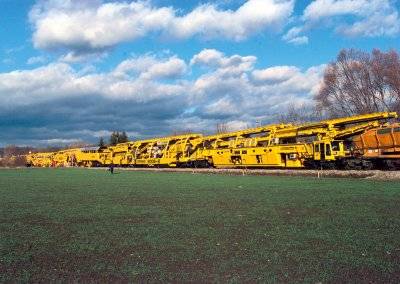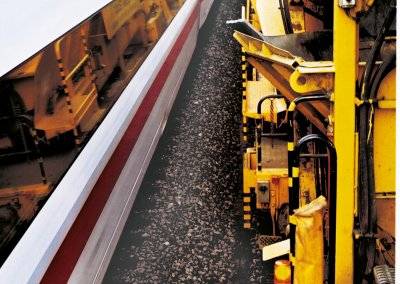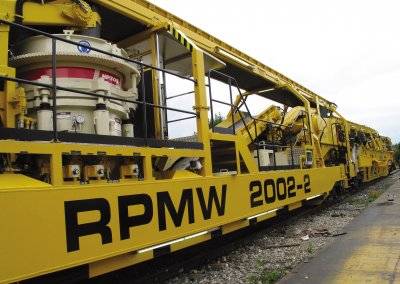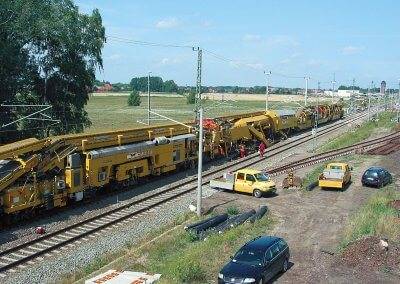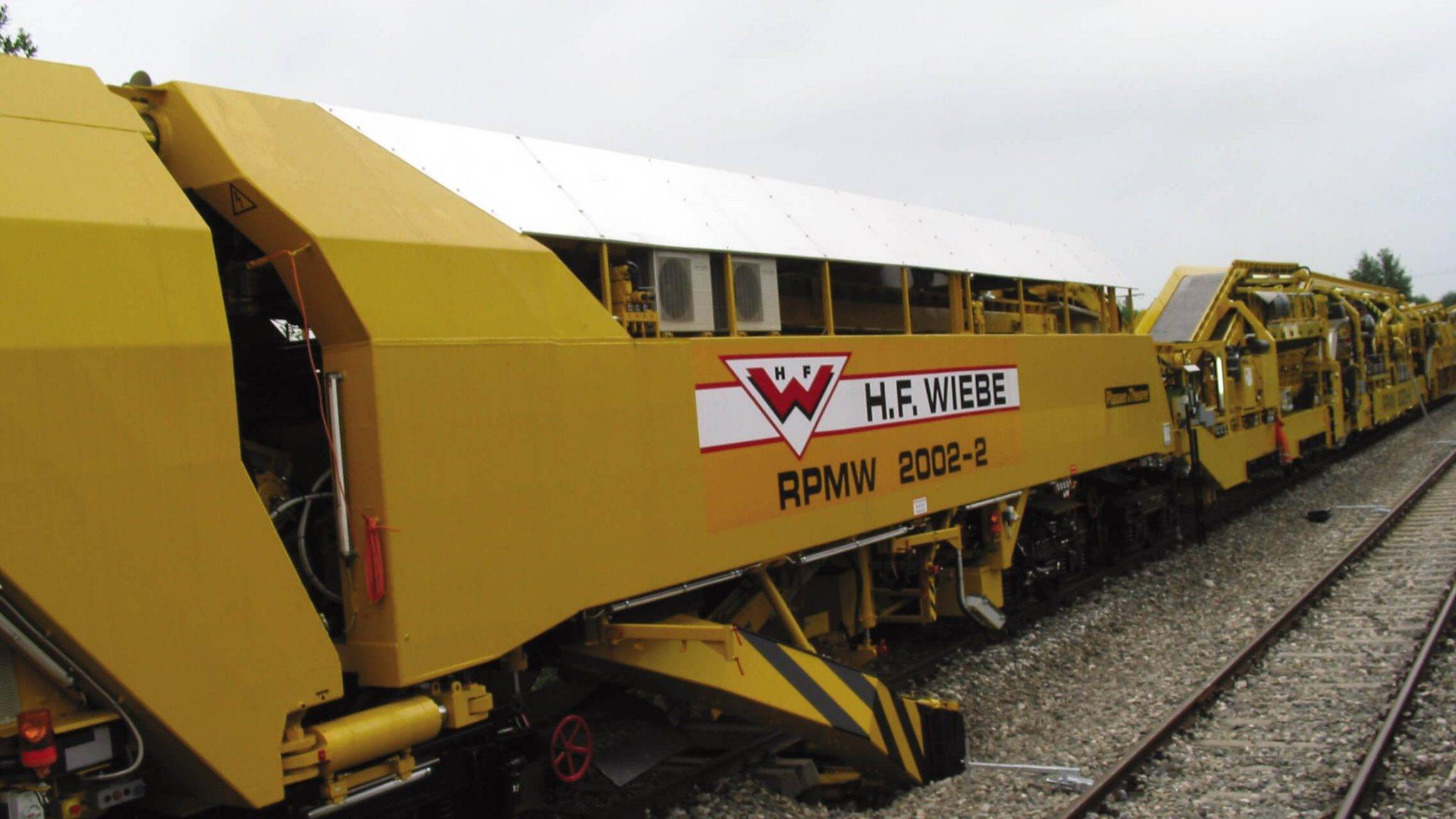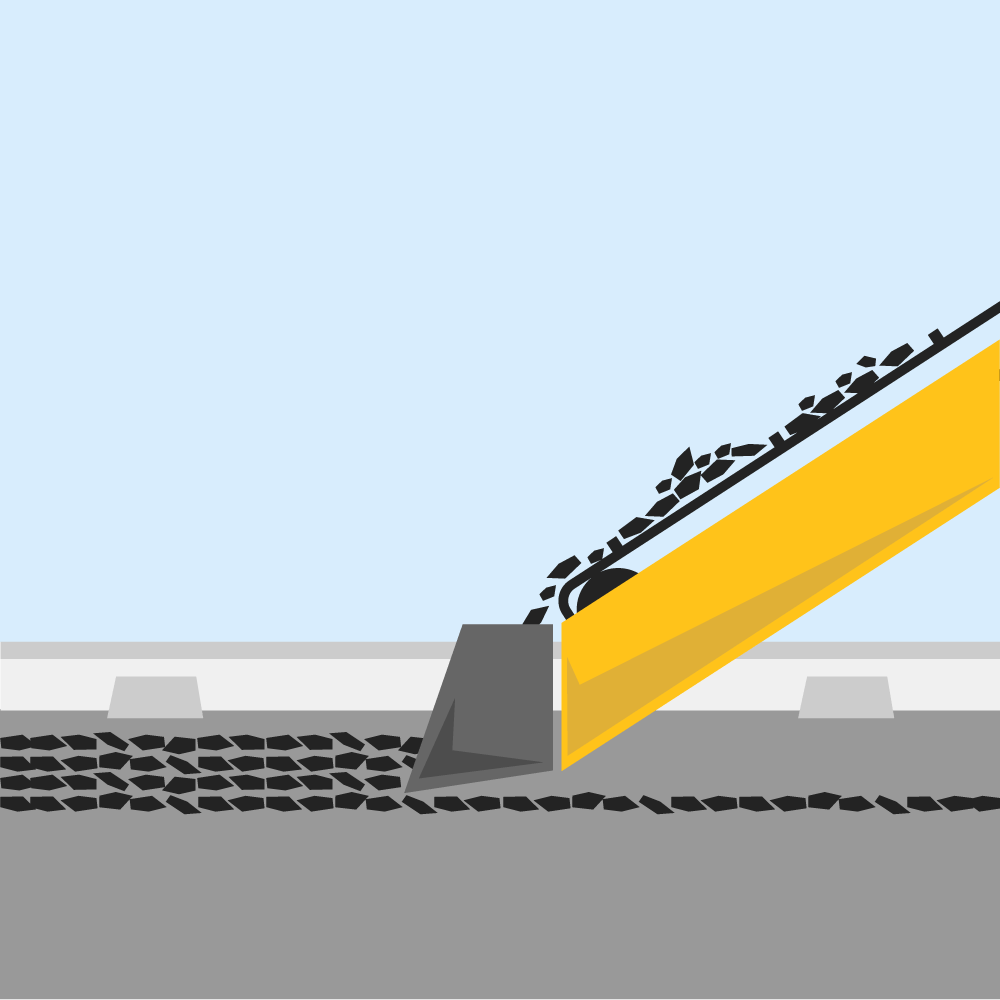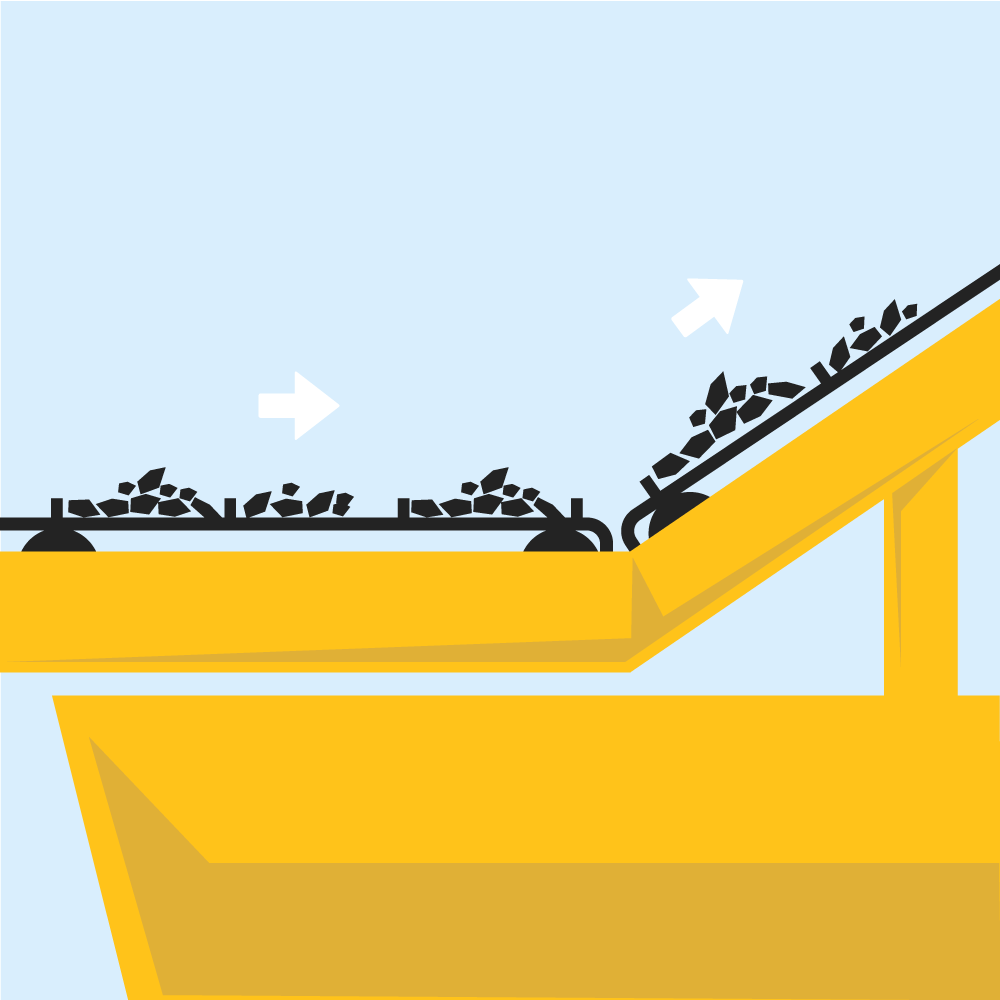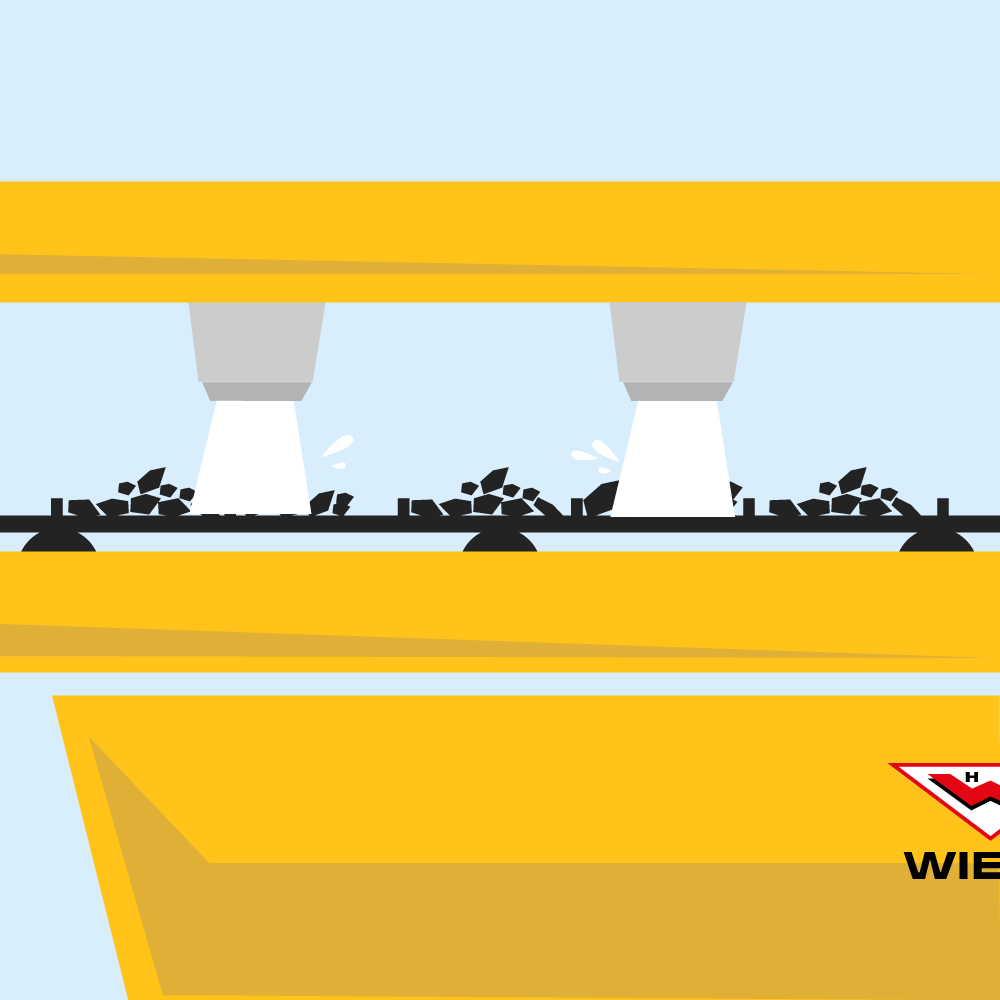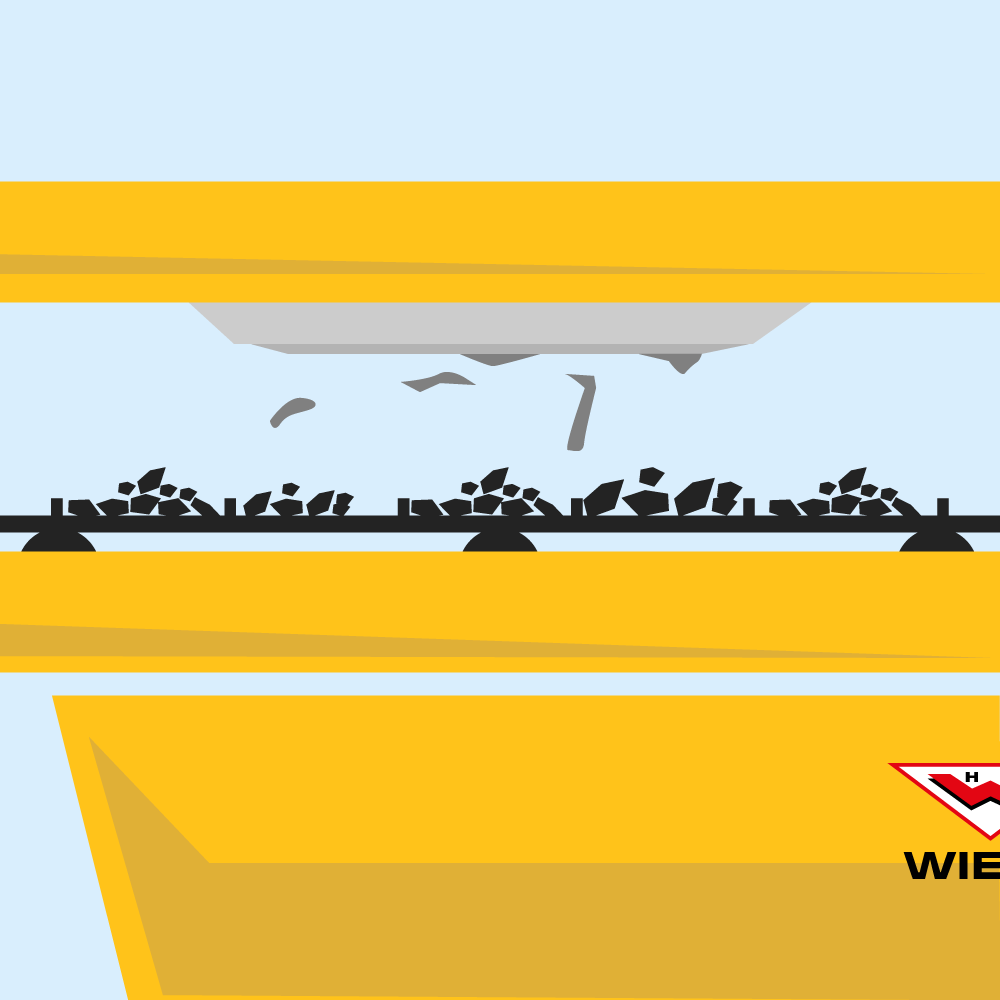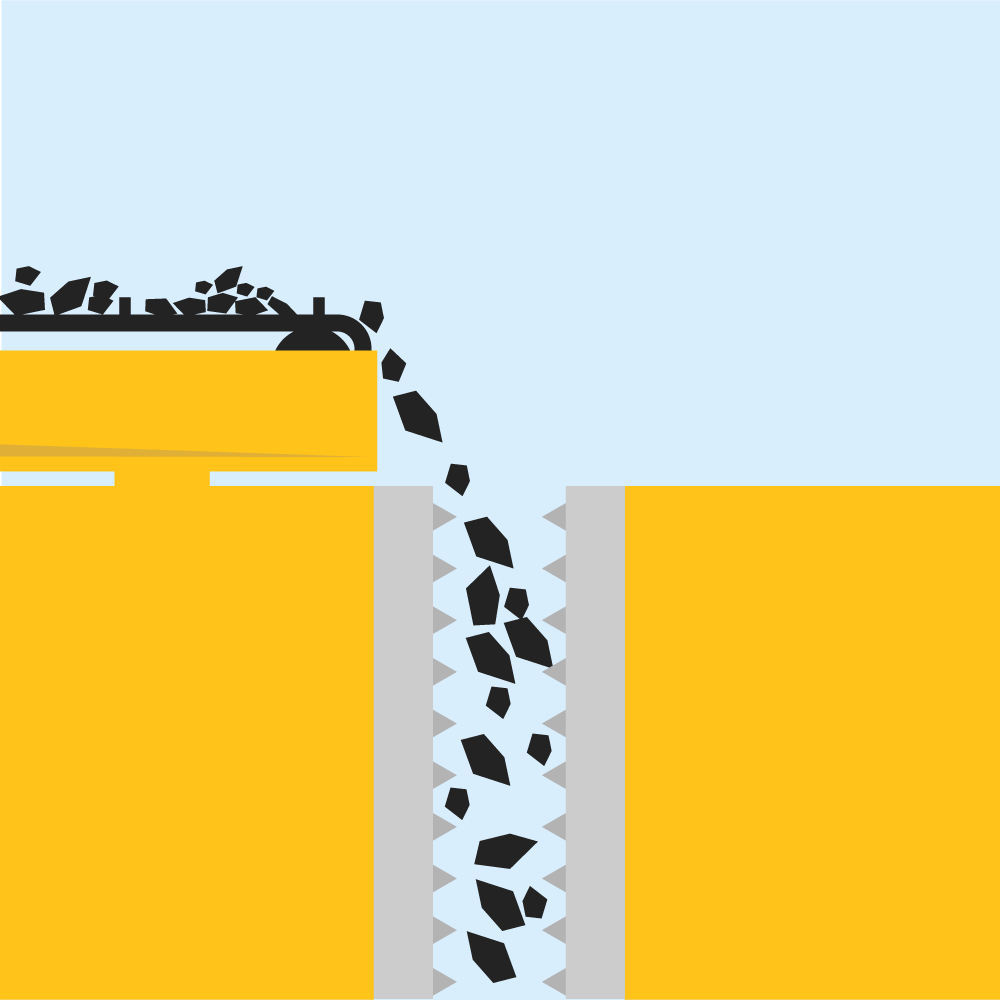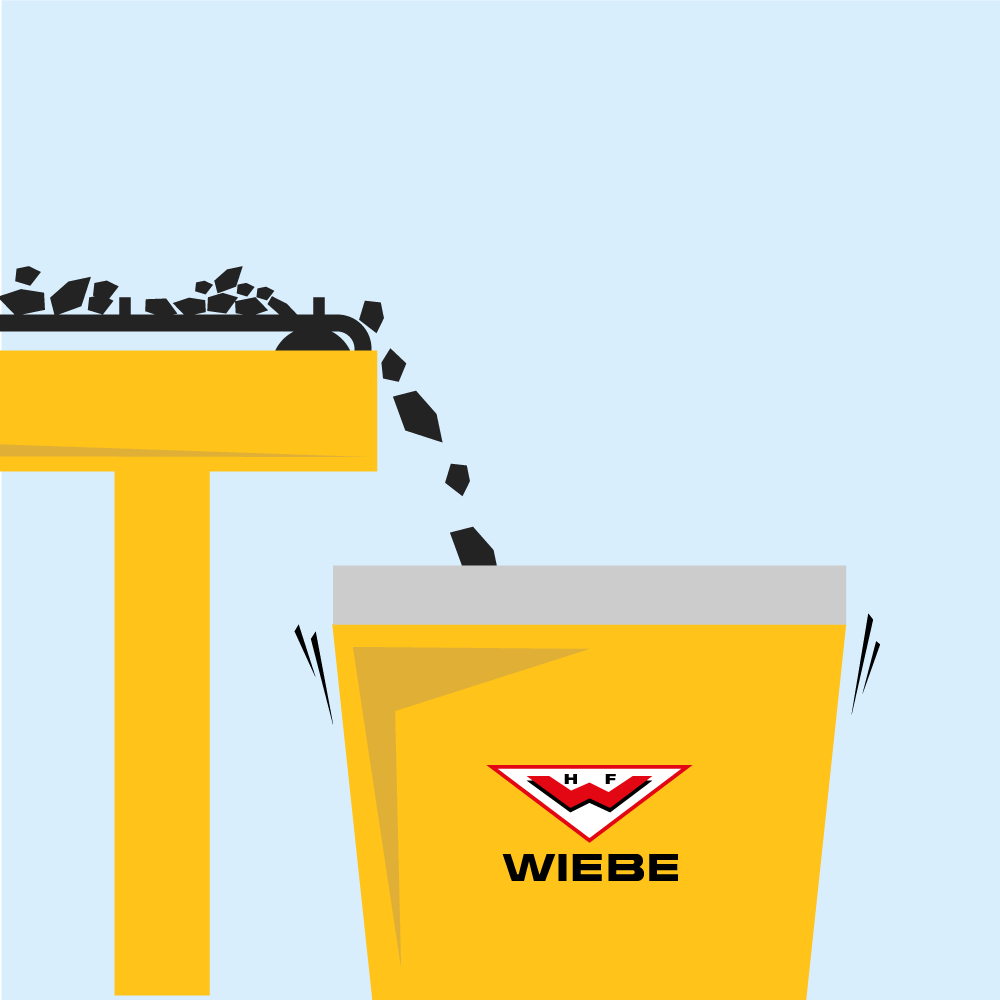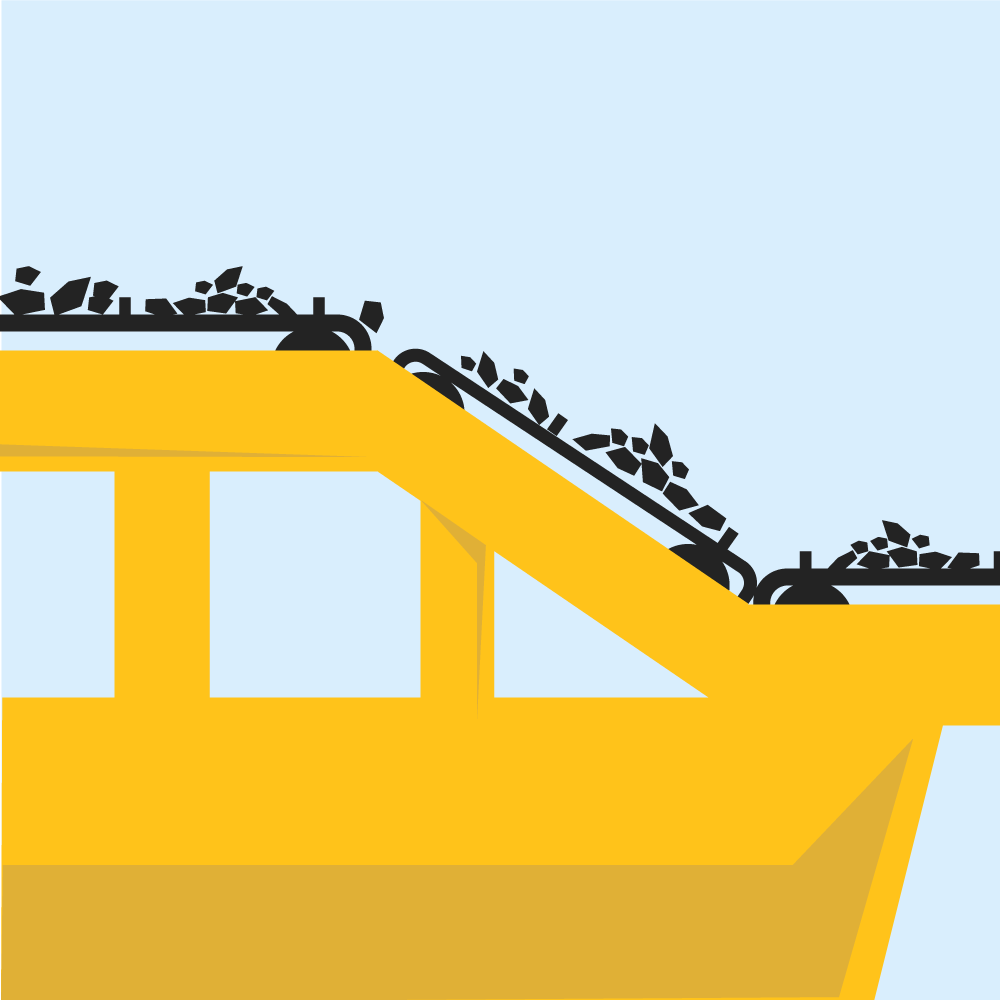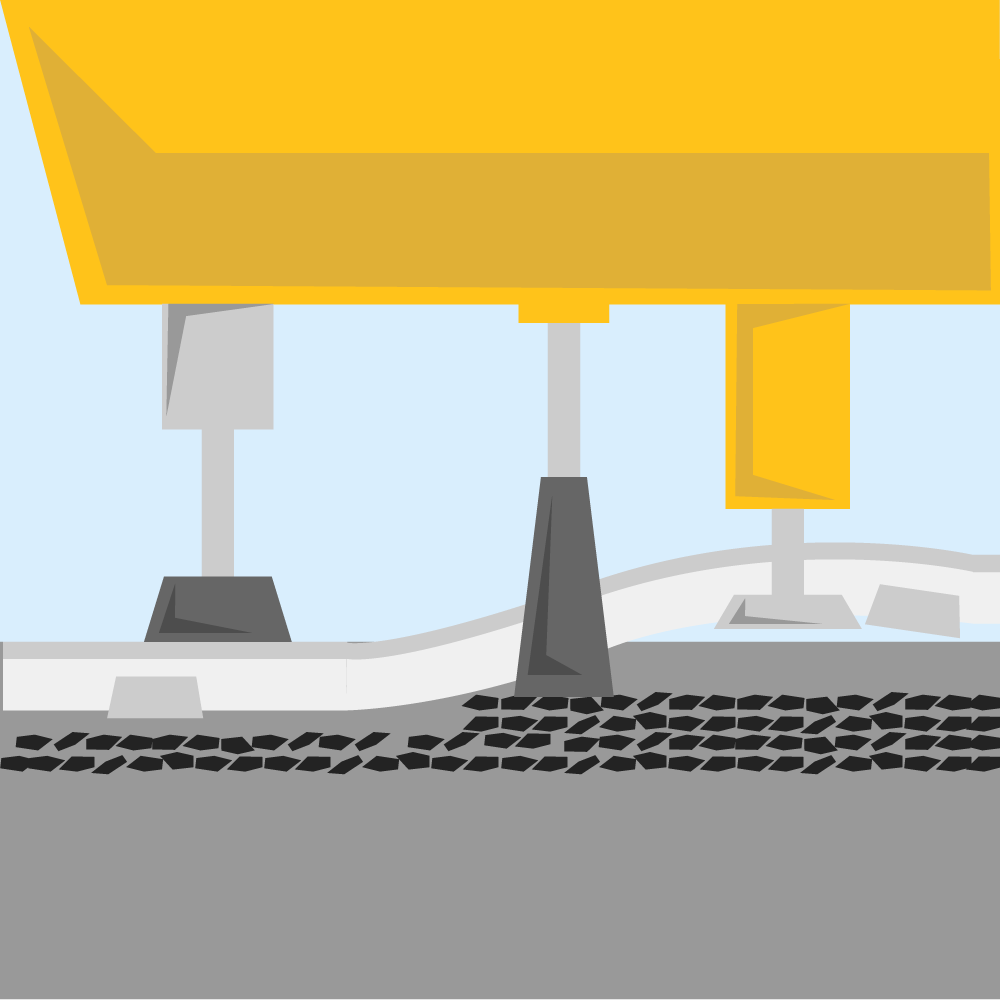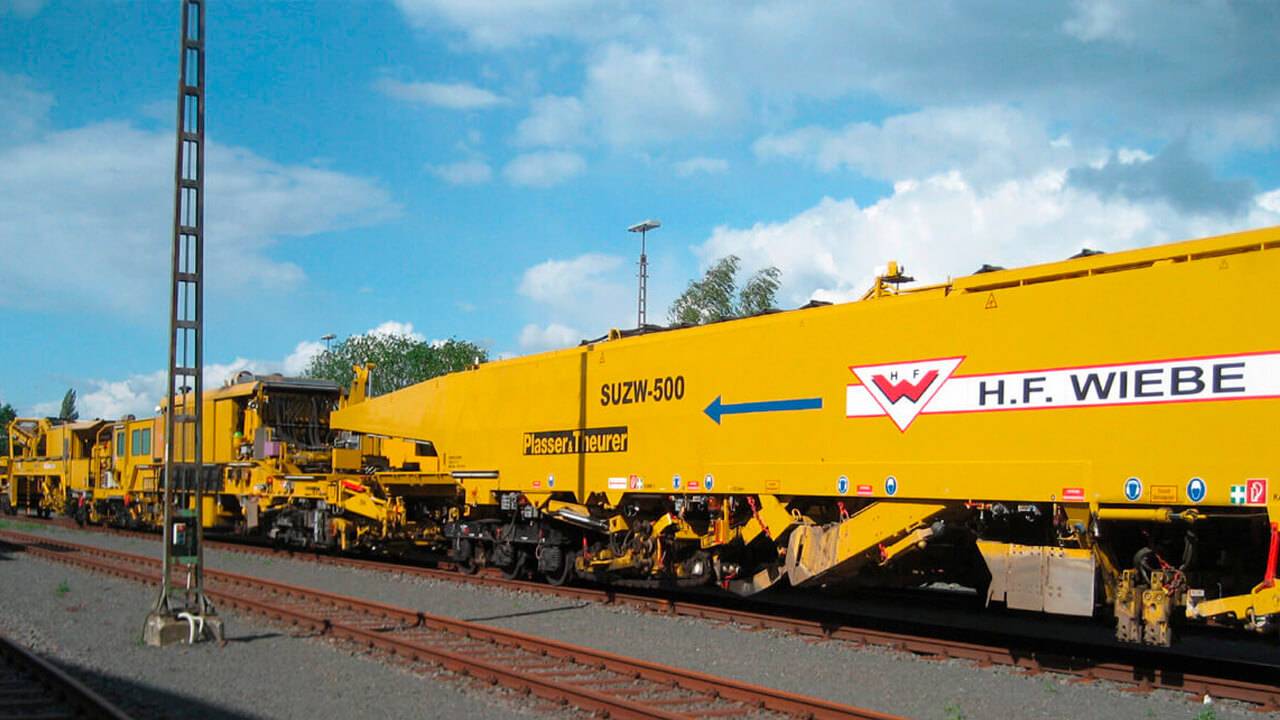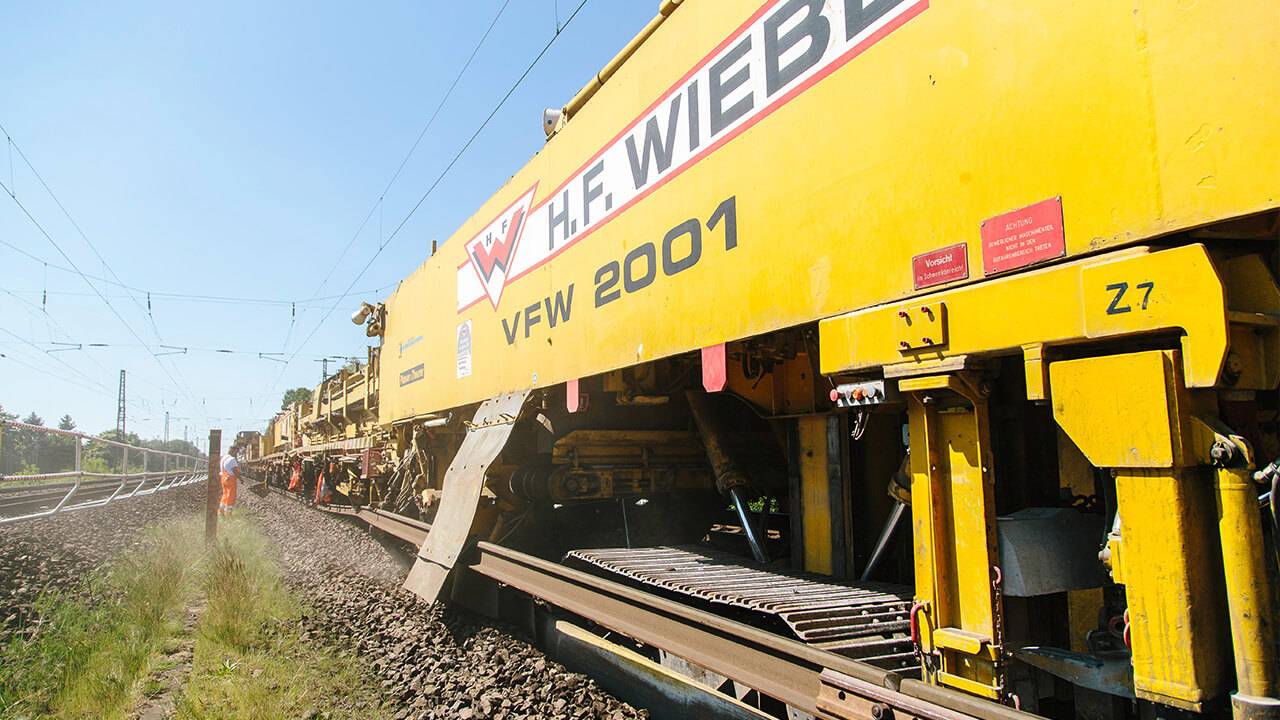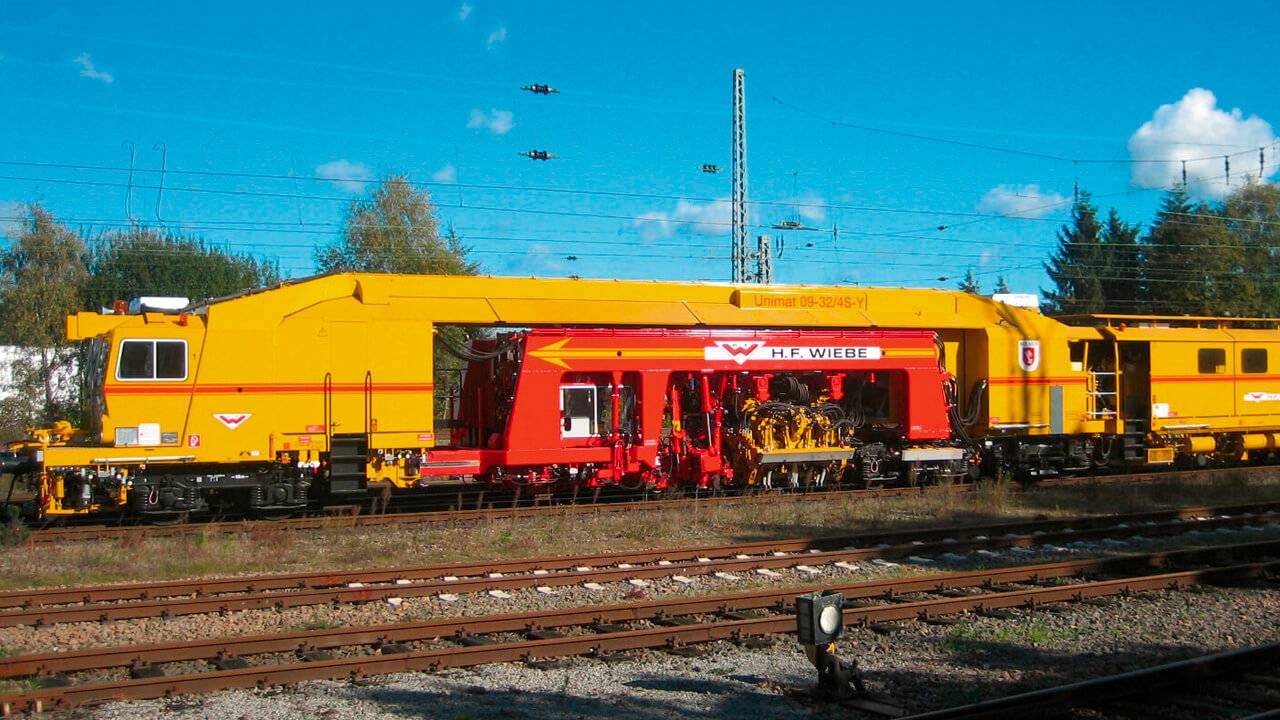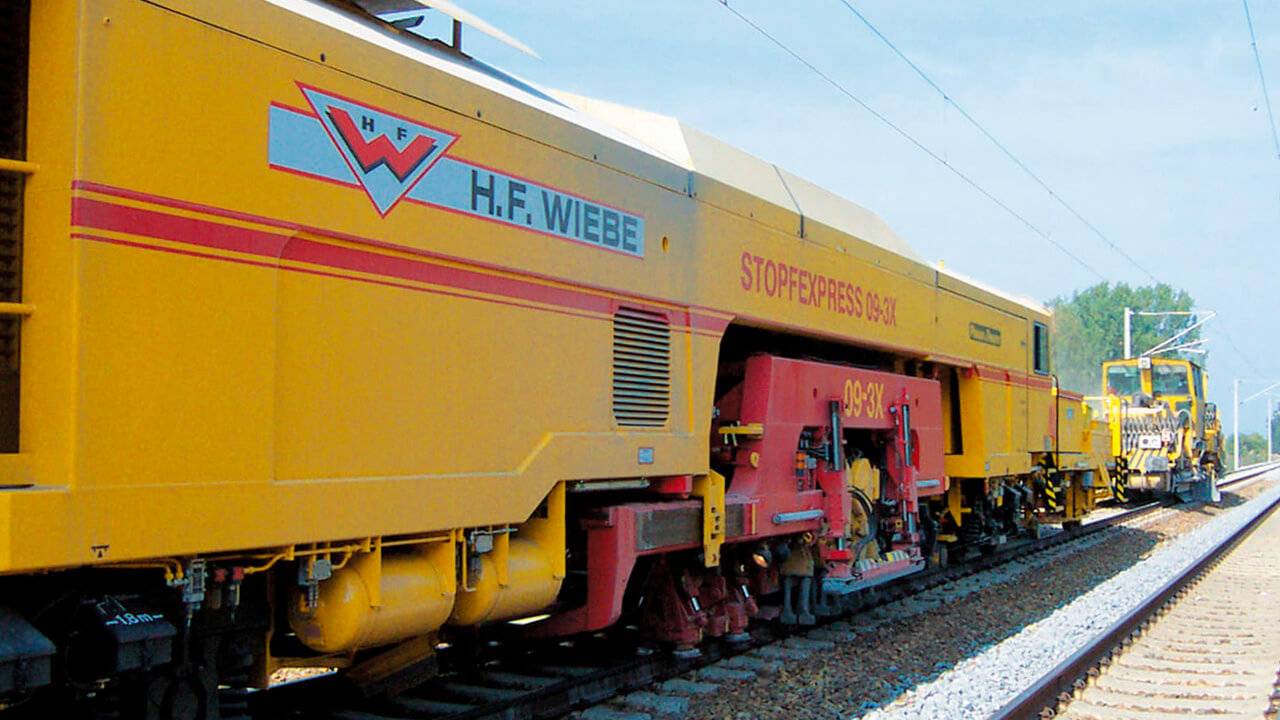RPMW 2002-2
The versatile one
At more than 140 metres long, almost 5 metres high and weighing about 560 tonnes, the track construction machine RPMW 2002-2 is one of the largest in the world. Due to its amazing output and the comprehensive performance range, it is an extremely important part of the Wiebe Group’s machine pool.
The recycling formation level improvement machine can perform a number of track construction tasks, with an overall motor output of in excess of 2400 kilowatts. This force is fully utilised in total reconstruction projects in which the RPMW 2002-2 carries out several work steps simultaneously: The soiled track bed is removed, the removed track bed material is treated, the ballast is recycled and the subgrade level is renewed.

Total mass in tonnes

Axles

Excavation chains
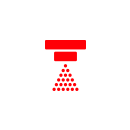
High-performance water spraying system
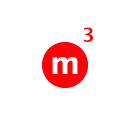
Cubic metre/hour excavation output

Metres/hour work output
2 excavation chains, 1 washing plant, 0 problems
The centrepiece of the work comprises the two excavation chains. They ensure that the ballast and soil can be removed and processed separately to prevent the two materials coming mixed. The RPMW 2002-2 also has a high-pressure washing system to treat the ballast and remove any residues and contamination. The track bed is first removed to a depth of 350 millimetres. It is even possible to renew the subgrade level up to a depth of 500.
Technical data
| Type of machine | Formation level improvement machine with ballast recycling |
| Manufacturer | Plasser & Theurer |
| Registration year | 2000 |
| Total length over buffers | 140,90 m | ||
| Width | 3,29 m | ||
| Hight | 4,65 m | ||
| Mass | 560 t | ||
| Axles | 29 | Powered of those | 12 |
| Permissible speed in train set | 100 km/h | Run by itself | 20 km/h |
| Running radius | 120 m |
Output
| Planable output | 110 m/h | ||
| Tooling times | 90 Min. | ||
| PSS installation | 400 mm at 5500 mm width | FSS installation | 500 mm at 5500 mm width |
| Min. working radius (at 160 mm superelevation) | 280 m | Tooling | 360 m |
| Max. inclination | 15 ‰ with 40 t attached load | ||
| Max. superelevation change | +/- 100 mm | ||
| Swivelling capabilities | +/- 500 mm | ||
| Ballast excavating chain | Gravel excavating chain | ||
| Excavation depth | up to 1200 mm under SO | Excavation depth | 700 mm under SO |
| Excavation width | 4050 - 5500 mm | Excavation width | 4000 - 4600 mm |
| Output | 800 m³ (at total excavation) | Output | 300 m³/h |
Work steps connected to the ballast excavation chain
Work steps around the subgrade excavation chain
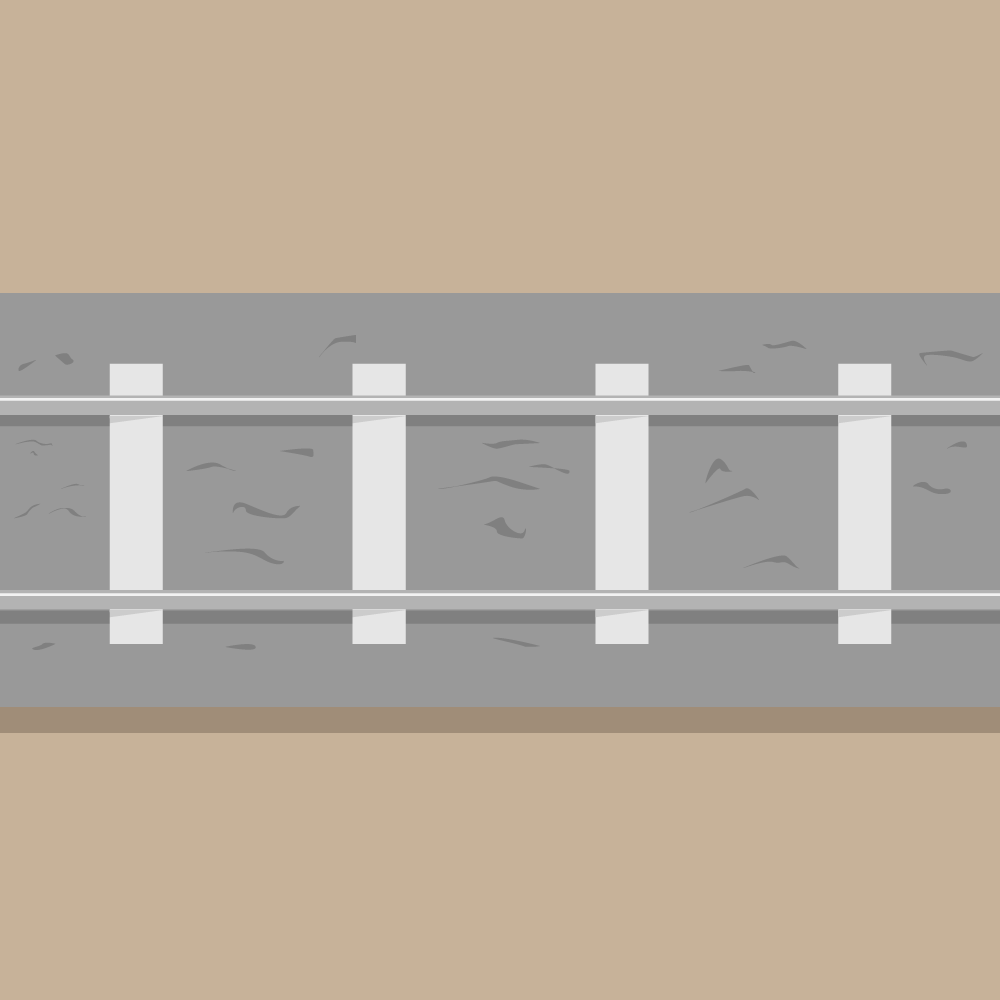
Picking up of the material
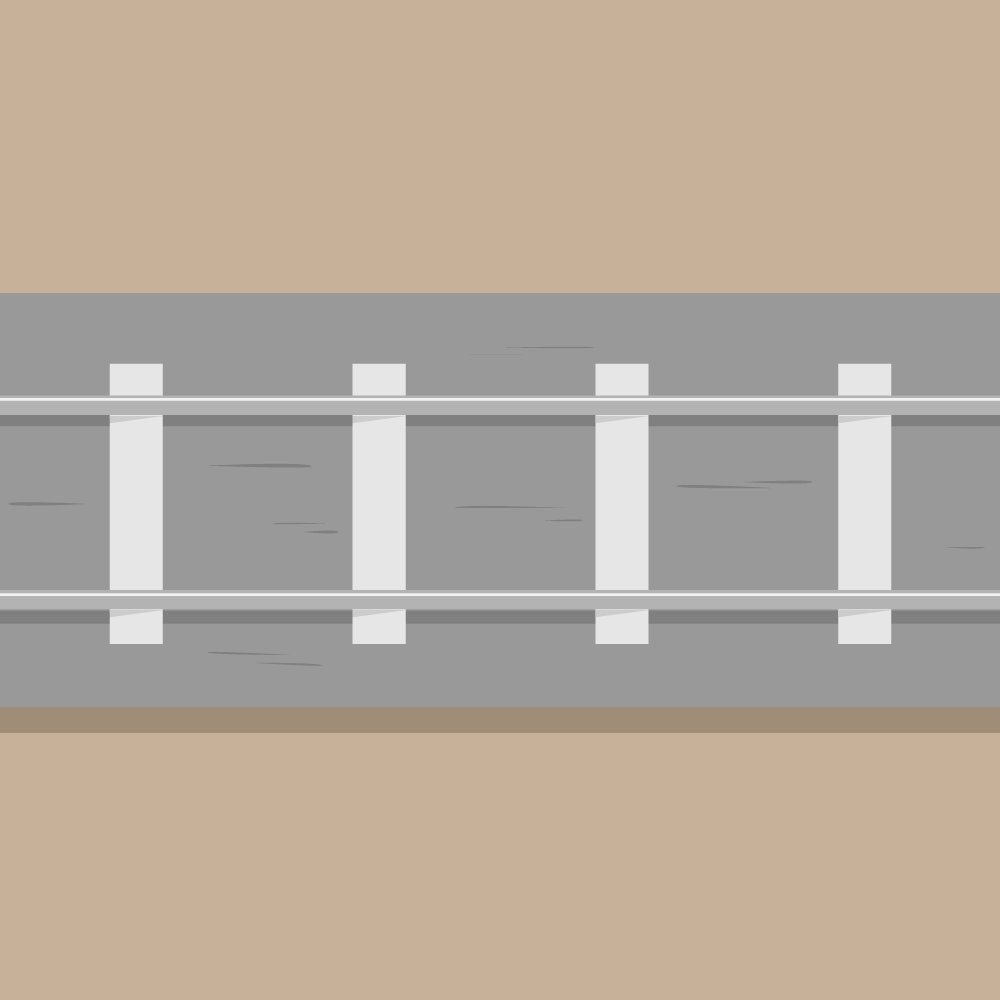
Smoothing of the subgrades
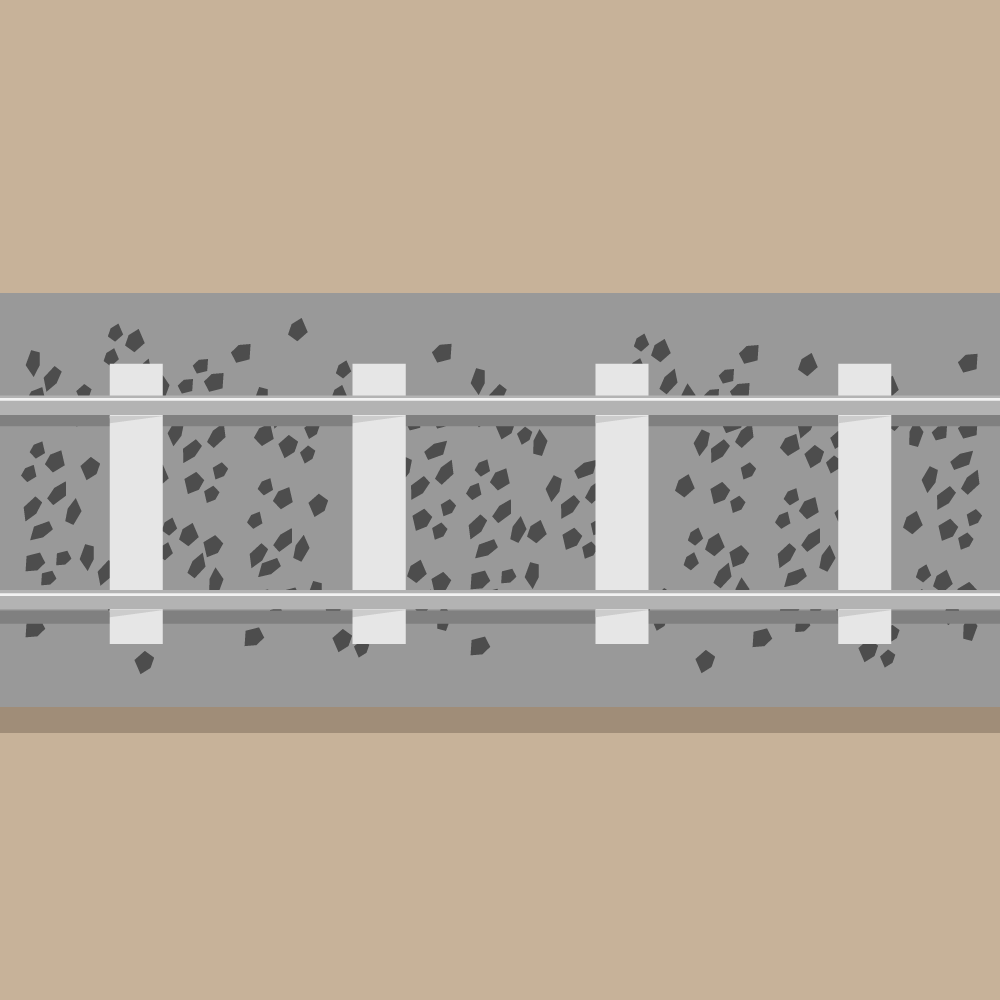
Distribution of the material
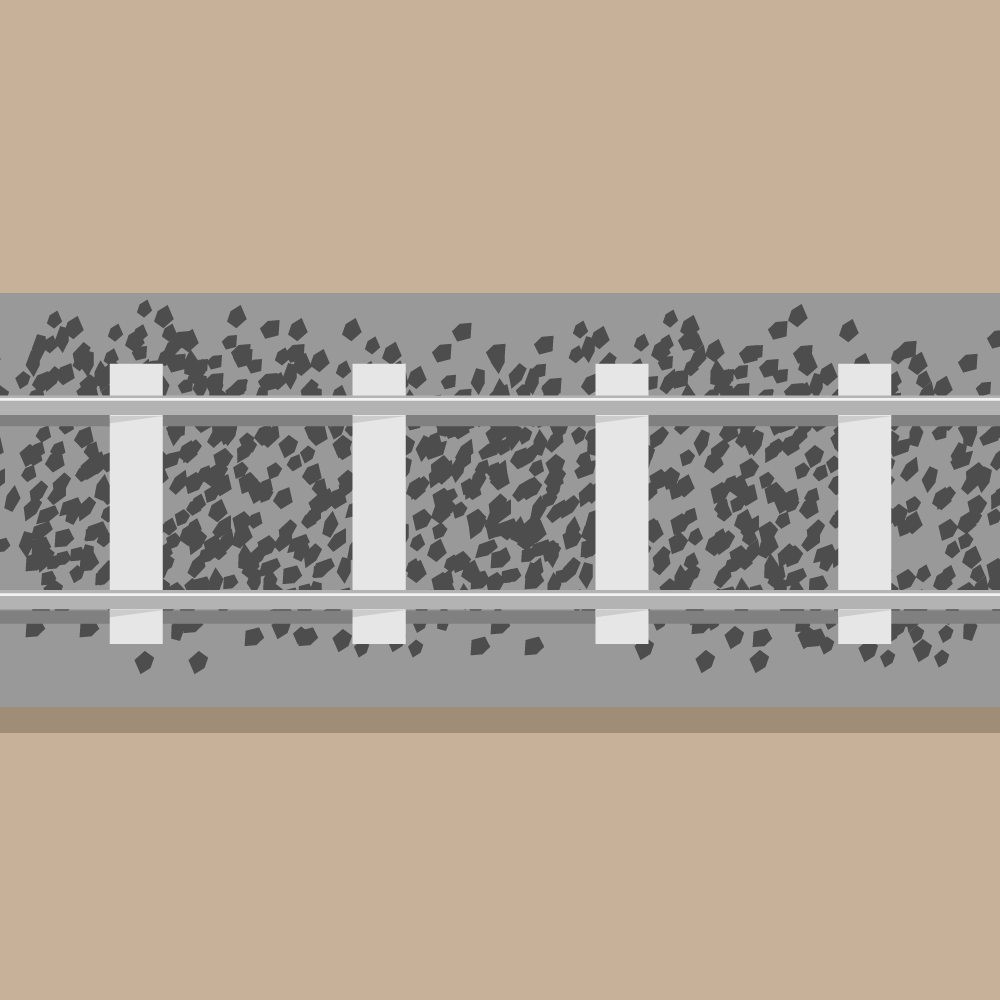
Levelling and compaction
Your contact partner
Jakob Laukert
(Head of department track machines)
The increase in rail traffic has lead to a steady increase in the demands made of track systems. Fortunately, the RPMW 2002-2 makes it very easy for us to keep pace with these developments.
In the case of comprehensive track construction and modernisation projects it is almost unimaginable today to use different machines for the individual work steps. For this reason, we fall back on the RPMW 2002-2 that picks up all the old material which is then processed and used to create a new formation level protective layer and a new ballast bed. A high-performance complete package.
Other machines
SUZW-500
14 sleepers a minute whilst also creating an installation formation level – the fast construction machine SUZW-500 stands out thanks to its performance.
VFW 2001
The fast construction machine VFW 2001 can be used to build remove or modernise tracks either with or without prior or subsequent track bed cleaning.
09-32 4SY
Thanks to a laser-supported 3-rail lift, even split sleepers can be processed by this very versatile track and switch tamping machine.
Stopfexpress 09-3X
Be it one or three sleepers at the same time, the Tamping Express 09-3X completes the track tamping work quickly and evenly.
